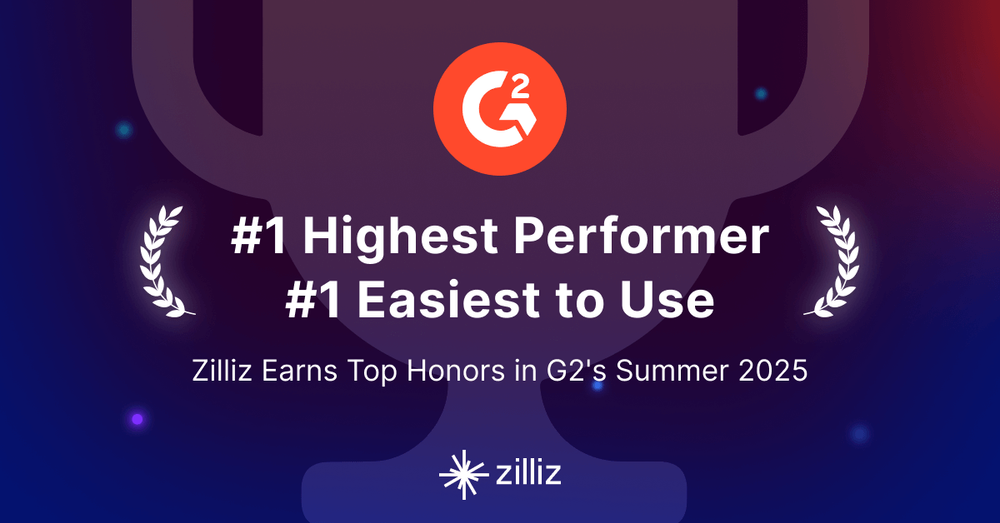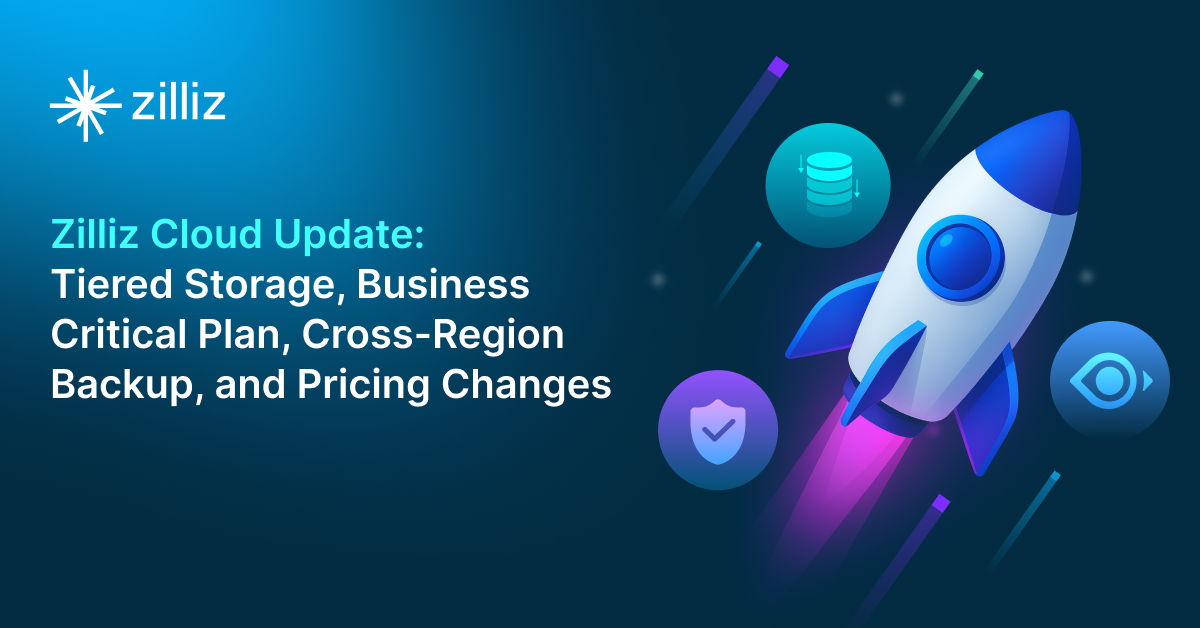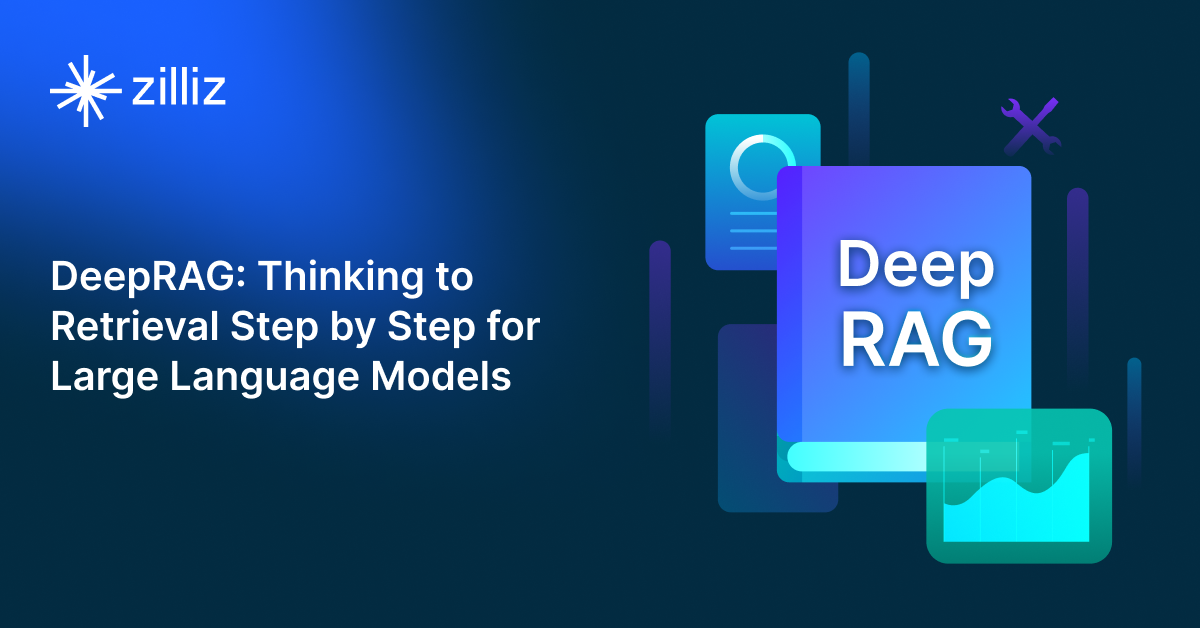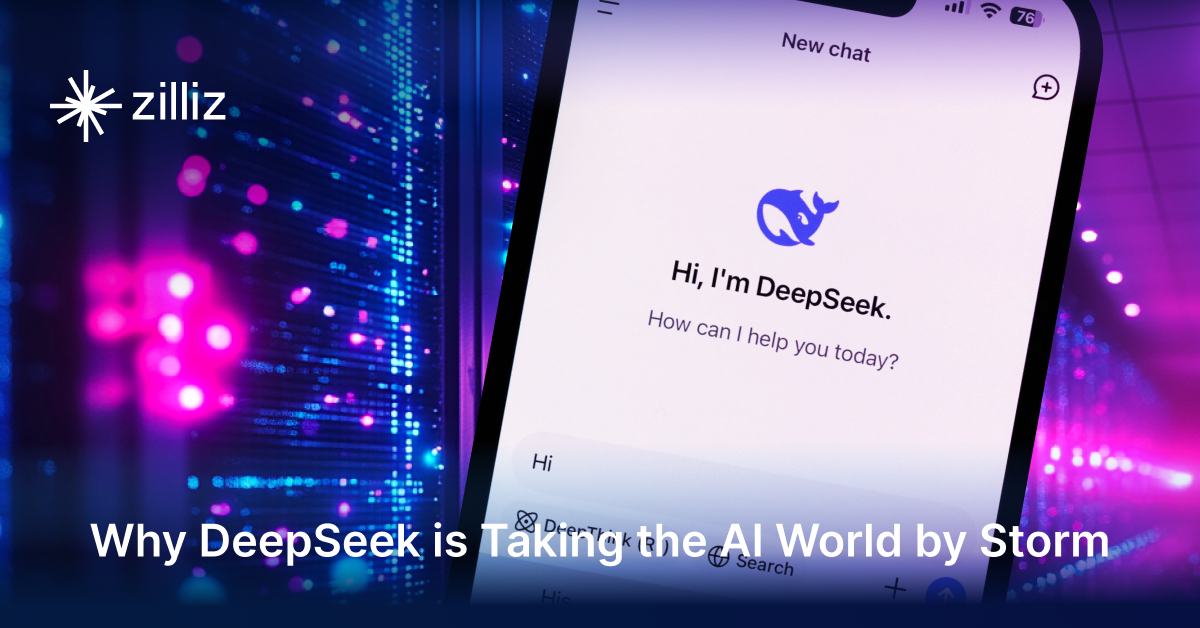Zilliz Named "Highest Performer" and "Easiest to Use" in G2's Summer 2025 Grid® Report for Vector Databases

The vector database market has been heating up, and G2's Summer 2025 Grid® Report just dropped some interesting insights. Among the standout results, Zilliz earned recognition as both "Highest Performer" and "Easiest to Use" in the Vector Database category. This dual recognition shows that Zilliz solved a challenge that has long defined the database industry—delivering enterprise-grade performance without the complexity typically associated with it.
For those unfamiliar with G2's methodology, their Grid® Reports aren't marketing fluff. They're based on authenticated reviews from real users—over 60 million software buyers who use these platforms on a daily basis. When G2 evaluates products, it considers two primary factors: Market Satisfaction (how happy customers are with the product) and Market Presence (market momentum and adoption). The credibility comes from the fact that vendors can't influence these rankings—they're purely based on real customer experiences and feedback.
The Performance vs. Usability Balance That Most Get Wrong
Most database technologies force you to choose. You either get blazing-fast performance with a steep learning curve, or you get something easy to use that can't handle serious workloads. Zilliz has cracked this code.
The "Highest Performer" badge reflects some impressive technical capabilities. Recent updates to Zilliz Cloud deliver up to 50,000 queries per second, sub-millisecond latency, and billion-level scaling—numbers that put it in a different league from many competitors. This performance boost is achieved through the AI-powered Cardinal search engine and AUTOINDEX, which automatically optimizes performance without requiring database administrators to manually tune everything.
But here's where it gets interesting: the "Easiest to Use" recognition. Traditionally, super high-performance databases require teams of specialists to set up and maintain. Customer feedback tells a different story about Zilliz. Users consistently mention the "easy-to-use dashboard and API for database management and monitoring," as well as how quickly they can get up and running.
One customer shared how their search times dropped "from eight seconds down to sub one second" after switching to Zilliz Cloud. Another noted they could "outsource all this kind of administration management and don't have to worry about servers breaking," allowing them to focus on actual product development instead of infrastructure babysitting.
What This Means for the Broader Market
The vector database space is experiencing explosive growth—searches for "vector database" increased 11× between January 2023 and January 2025. This isn't just hype; it's driven by real business needs as companies rush to implement AI applications that require advanced infrastructure with similarity search capabilities.
Zilliz's customer base tells an interesting story about this market evolution. It serves over 10,000 enterprise users, including household names such as Walmart, Salesforce, Nvidia, IBM, and Roblox, as well as rising stars in AI like Read.AI and beatoven.ai. What's striking is the diversity, from e-commerce giants implementing recommendation systems to financial services firms deploying fraud detection algorithms and AI agents.
As AI applications transition from experimental projects to production systems, an increasing number of companies require infrastructure that scales without necessitating platform switches.
The Open Source Advantage
There's another layer to Zilliz's success that's worth understanding. Zilliz Cloud builds on Milvus, the most popular open-source vector database, with over 35,000 GitHub stars and more than 100 million downloads. This foundation provides several advantages that pure commercial offerings can't match.
First, organizations can evaluate the core technology through Milvus before committing to the managed service. This reduces adoption risk, a major concern for enterprises making infrastructure decisions.
Second, the open-source heritage ensures technology transparency and helps address vendor lock-in concerns that often complicate enterprise software purchases.
As one customer noted in G2, "the ability to take the open source code base and build something really powerful for our own use case" was a key satisfaction factor.
Looking Ahead
As vector databases become essential infrastructure for AI applications, the G2 recognition suggests Zilliz has found a sustainable competitive position. They've proven that companies don't have to sacrifice performance for usability or vice versa.
For organizations evaluating vector database options, this recognition provides useful market validation. But as with any technology decision, the proof will be in real-world implementation. The good news is that with Zilliz's open-source foundation, teams can test drive the technology before making commitments—something not all competitors offer.
The vector database market will continue evolving rapidly, but Zilliz's combination of proven performance, ease of use, and open-source flexibility positions them well for whatever comes next in the AI infrastructure landscape.
- The Performance vs. Usability Balance That Most Get Wrong
- What This Means for the Broader Market
- The Open Source Advantage
- Looking Ahead
Content
Start Free, Scale Easily
Try the fully-managed vector database built for your GenAI applications.
Try Zilliz Cloud for FreeKeep Reading

Zilliz Cloud Update: Tiered Storage, Business Critical Plan, Cross-Region Backup, and Pricing Changes
This release offers a rebuilt tiered storage with lower costs, a new Business Critical plan for enhanced security, and pricing updates, among other features.

DeepRAG: Thinking to Retrieval Step by Step for Large Language Models
In this article, we’ll explore how DeepRAG works, unpack its key components, and show how vector databases like Milvus and Zilliz Cloud can further enhance its retrieval capabilities.

Why DeepSeek V3 is Taking the AI World by Storm: A Developer’s Perspective
Explore how DeepSeek V3 achieves GPT-4 level performance at fraction of the cost. Learn about MLA, MoE, and MTP innovations driving this open-source breakthrough.
